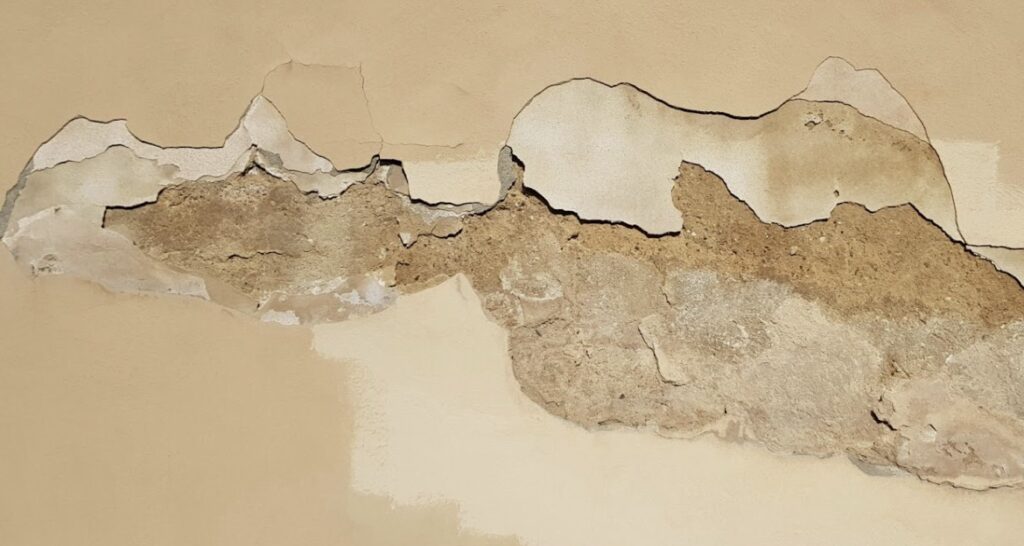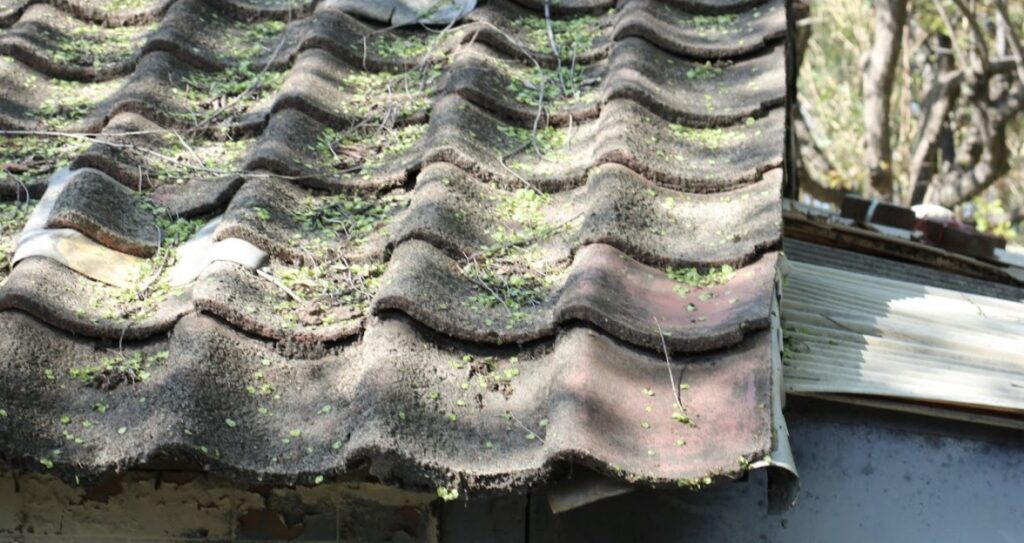Artex, a textured coating popular in UK homes from the 1960s to the 1980s, is often found on ceilings and walls. The central concern is that older formulations of artex frequently contained asbestos to improve durability.
This article helps homeowners, landlords, and renovators understand the potential risks, identify when artex may contain asbestos, and decide on the safest next steps—whether that’s testing, managing, or removing the material.
Ban of Asbestos in Artex
Artex was originally formulated as a decorative coating, with chrysotile (white) asbestos added for strength and crack resistance.
Use of amphibole asbestos types was banned in 1985, and chrysotile was fully banned in the UK in 1999. Therefore, any Artex applied before 2000—especially before 1985—should be treated as potentially asbestos-containing. Because many homes retained these finishes long after application, older ceilings are a red flag for asbestos presence.
Spotting Potentially Asbestos-Containing Artex
To assess the risk of asbestos, start by checking property records or estimating the build or renovation date. Artex is often applied in swirls, stipples, or fan patterns, typically on ceilings, coving, or upper walls.

While visual inspection can identify textured coatings, you cannot determine asbestos content by sight alone. If the home was built or renovated before 2000, testing is the only reliable method to confirm whether asbestos is present in Artex.
Testing For Asbestos in Artex: DIY vs Professional Sampling
Home asbestos test kits are available at low cost (£30–£50) and involve collecting a small sample for lab testing. However, these kits lack legal standing and offer limited reliability due to inconsistent sample handling.
Professional asbestos testing involves wet bulk sampling using personal protective equipment (PPE), proper containment, and chain-of-custody procedures. Samples are analysed by UKAS-accredited labs using PLM or SEM. Costs range from £50 to £100 per asbestos sample, with turnaround typically within 3 to 5 working days.
Health Risks of Disturbing Asbestos Content in Artex
Artex can become dangerous when disturbed as drilling, sanding, or cracking the surface can release asbestos fibres into the air. If inhaled, these fibres may cause serious diseases such as mesothelioma, asbestos-related lung cancer, and asbestosis.
Symptoms often develop decades after exposure. While bonded artex poses less risk than friable forms, any damage increases the potential for asbestos fibre release, especially in poorly ventilated areas.
Managing Undisturbed Asbestos in Artex
If artex is confirmed to contain asbestos but remains undisturbed and intact, managing in place is often the safest and most cost-effective option.
This may involve sealing the surface with a specialist asbestos encapsulating paint, covering it with plasterboard, maintaining condition logs, and arranging periodic asbestos inspections. This approach avoids disruption and is suitable for low-risk, bonded asbestos where no building works are planned.
Removal of Asbestos and Encapsulation Options in Artex
Licensed asbestos removal is required when artex is damaged or friable or if major renovation work will disturb it.

Temporary options like overboarding or wallpapering may provide short-term solutions, but full asbestos removal involves specialist containment setups, negative-pressure units, and post-clearance air testing. Asbestos removal costs range from £500 to £1,500 per room, with 1–2 days required on site and lab clearance in 3–5 working days.
Asbestos Legal Requirements & Duty-Holder Obligations
Under the Control of Asbestos Regulations 2012 (CAR2012), domestic property owners must ensure asbestos is managed safely. While private homes are exempt from routine asbestos surveying, landlords and duty holders in communal areas must comply.
Before any refurbishment or demolition, an R&D asbestos survey is legally required. Penalties for non-compliance with asbestos regulations include fines, project shutdowns, and liability for future health claims. Post-removal records and clearance certificates must be retained.
Renovation Planning & Property Value Impact Due to Asbestos in Artex
If you’re planning a renovation, integrate artex risk assessment into your budget and timeline. Identifying and managing asbestos early avoids project delays and supports health and safety compliance.
From a sales perspective, proactive testing or safe asbestos removal reassures buyers. Conversely, unexpected ACM discoveries during conveyancing can lead to price reductions or even stalled sales. Transparency maintains property value and helps negotiations.
